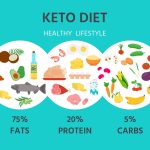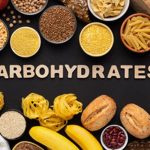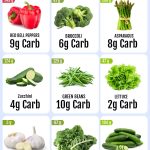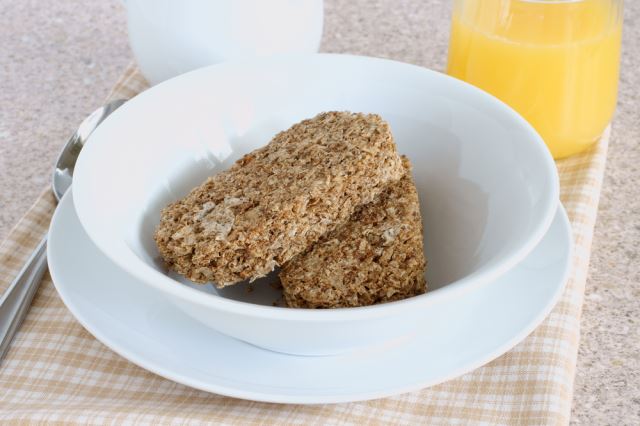Gallbladder attacks, also known as gallbladder attacks or cholecystitis, occur when there is an issue with the gallbladder, a small organ located beneath the liver. The gallbladder stores and releases bile, a digestive fluid that helps break down fats. When this process is disrupted, it can lead to various symptoms and complications. Recognizing the symptoms of a gallbladder attack is crucial for timely medical intervention and effective treatment. This comprehensive guide will explore the common symptoms of a gallbladder attack, their implications, and how to seek appropriate care.
10 Symptoms of Gallbladder Attack
1. Pain that Lasts Several Hours
One of the primary symptoms of a gallbladder attack is severe pain in the upper right side of the abdomen. This pain often occurs after eating, particularly after consuming fatty or greasy foods. The pain can be sharp and intense, lasting for several hours, and may radiate to the back or shoulder blade.
Why It Happens: This pain results from the inflammation of the gallbladder or the presence of gallstones blocking the bile ducts.
2. Abdominal Pain After Eating
Individuals experiencing a gallbladder attack may notice that the pain intensifies after eating, especially high-fat meals. This is because fatty foods stimulate the gallbladder to release bile, which can exacerbate the discomfort if there are existing issues with the gallbladder.
Why It Happens: The gallbladder’s reaction to fatty foods can trigger a painful response when it is inflamed or obstructed.
3. Nausea or Vomiting
Nausea and vomiting are common symptoms accompanying a gallbladder attack. These symptoms may occur as the body’s response to pain or as a result of digestive issues caused by the gallbladder’s dysfunction.
Why It Happens: Nausea and vomiting can be triggered by the body’s reaction to pain and discomfort or by the digestive disturbances caused by the gallbladder problem.
4. Fever or Chills
In some cases, a gallbladder attack may be accompanied by fever or chills. This can indicate an infection or inflammation of the gallbladder, which requires prompt medical attention.
Why It Happens: Fever and chills are often signs of an infection or inflammation, which can occur if the gallbladder becomes severely inflamed or if there is an associated bacterial infection.
5. Light-Colored Stool
Stool color can change during a gallbladder attack. Light-colored stool can be a sign that the bile flow is obstructed. Bile normally gives stool its brown color, so a lack of bile can result in lighter-colored stools.
Why It Happens: Blocked bile ducts prevent bile from reaching the intestines, leading to changes in stool color.
6. Brownish-Colored Urine
The urine may appear darker or brownish during a gallbladder attack. This change in urine color can be due to increased levels of bilirubin in the blood, a pigment produced by the breakdown of red blood cells.
Why It Happens: When bile flow is obstructed, bilirubin can accumulate in the bloodstream and be excreted in the urine, causing it to appear darker.
7. Yellowing of Skin or Whites of Eyes
Jaundice, characterized by yellowing of the skin and the whites of the eyes, can occur during a gallbladder attack. This condition is caused by an accumulation of bilirubin in the blood.
Why It Happens: Jaundice occurs when bile is not properly processed or excreted, leading to a buildup of bilirubin in the blood.
8. Persistent Indigestion
Indigestion or dyspepsia can be a symptom of a gallbladder attack. This includes feelings of discomfort, bloating, or fullness in the upper abdomen, often following meals.
Why It Happens: The gallbladder’s role in digesting fats can be compromised during an attack, leading to digestive discomfort.
9. Dark or Discolored Stool
In addition to light-colored stool, some individuals may experience dark or discolored stool during a gallbladder attack. This can be a sign of an underlying issue with bile flow.
Why It Happens: Variations in stool color can result from changes in bile production or flow.
10. Intense Pain in the Upper Right Abdomen
The pain associated with a gallbladder attack is often concentrated in the upper right part of the abdomen. This pain can be sudden and severe, sometimes described as cramping or colicky.
Why It Happens: This localized pain is due to the gallbladder’s inflammation or the presence of gallstones affecting the surrounding tissues.
When to Seek Medical Help
If you experience symptoms of a gallbladder attack, it is essential to seek medical attention promptly. Persistent or severe symptoms, especially those associated with fever, jaundice, or severe abdominal pain, should be evaluated by a healthcare professional. Early diagnosis and treatment can help manage the condition effectively and prevent complications.
External Links for Further Reading
- Mayo Clinic – Gallbladder Attack Symptoms
- National Institute of Diabetes and Digestive and Kidney Diseases (NIDDK) – Gallstones and Gallbladder Disease
FAQs
Q1: What causes a gallbladder attack?
A1: A gallbladder attack is often caused by the presence of gallstones, which are solid particles that form in the gallbladder and can block the bile ducts. Other factors include inflammation of the gallbladder (cholecystitis), infections, or bile duct obstruction.
Q2: How can I prevent gallbladder attacks?
A2: Preventing gallbladder attacks involves maintaining a healthy diet low in fatty foods, staying hydrated, and managing weight. Regular physical activity and avoiding rapid weight loss can also help reduce the risk of developing gallstones.
Q3: What are the treatment options for a gallbladder attack?
A3: Treatment for a gallbladder attack may include medications to manage pain and inflammation, dietary changes, and in some cases, surgery to remove the gallbladder (cholecystectomy). Your healthcare provider will recommend the best treatment based on your specific condition.
Q4: Are there any home remedies for relieving gallbladder attack symptoms?
A4: While home remedies may provide temporary relief, they are not a substitute for medical treatment. Drinking plenty of water, consuming a low-fat diet, and applying a warm compress to the abdomen may help alleviate symptoms. However, it is essential to consult a healthcare professional for proper diagnosis and treatment.
Q5: Can a gallbladder attack be life-threatening?
A5: A gallbladder attack itself is not usually life-threatening, but complications such as severe inflammation, infection, or gallbladder rupture can pose serious health risks. Timely medical intervention is important to address these risks and manage the condition effectively.
Q6: What is the difference between a gallbladder attack and gallstones?
A6: Gallstones are solid particles that form in the gallbladder and can cause blockages or inflammation. A gallbladder attack is an acute episode of pain and discomfort resulting from the effects of gallstones or other gallbladder issues. Gallstones can lead to gallbladder attacks but are not synonymous with them.
Q7: How is a gallbladder attack diagnosed?
A7: A gallbladder attack is diagnosed through a combination of medical history, physical examination, and imaging tests such as ultrasound, CT scan, or MRI. Blood tests may also be performed to assess liver function and detect signs of infection or inflammation.
Q8: Can lifestyle changes help manage gallbladder issues?
A8: Yes, lifestyle changes such as adopting a healthy diet, regular exercise, and maintaining a healthy weight can help manage and prevent gallbladder issues. Avoiding high-fat and greasy foods can reduce the risk of gallstones and gallbladder attacks.
Q9: Is surgery always necessary for treating gallbladder issues?
A9: Surgery, specifically cholecystectomy, may be recommended if gallbladder attacks are recurrent or severe. However, not all cases require surgery. Treatment options are based on the severity of the condition and individual patient factors.
Q10: How long does it take to recover from a gallbladder attack?
A10: Recovery time from a gallbladder attack varies depending on the severity of the attack and the treatment received. Mild attacks may resolve with dietary changes and medications, while more severe cases may require surgery and a longer recovery period. Consult your healthcare provider for personalized recovery guidance.
By understanding the symptoms and seeking timely medical care, individuals can effectively manage gallbladder attacks and reduce the risk of complications. If you experience any of these symptoms, don’t hesitate to consult a healthcare professional for a thorough evaluation and appropriate treatment.












